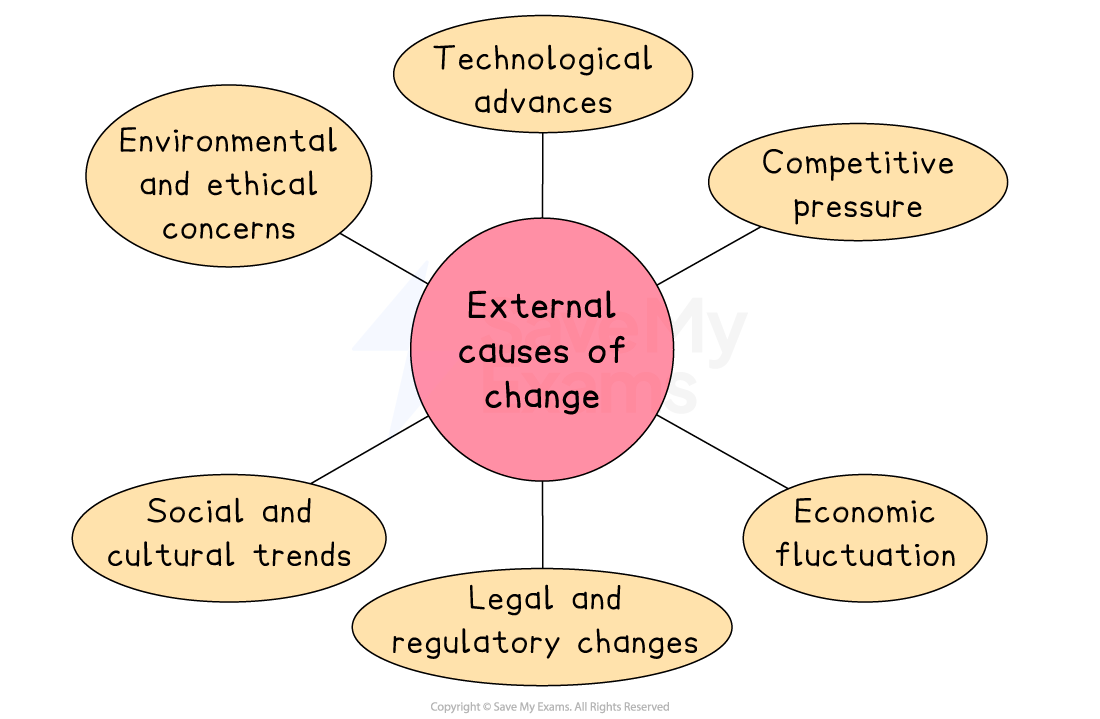Corporate Planning and Culture (Cambridge (CIE) A Level Business): Revision Note
Exam code: 9609
The importance of corporate planning
Corporate planning is the process taken by senior managers to decide on long-term goals, such as growth targets, new products or entry into new markets
They then draw up broad plans for how the entire organisation will achieve them
Why corporate planning is important

Sets a clear direction
It tells every department what the company aims to do over the next few years, so everyone works toward the same goals
Aligns resources
By knowing its main priorities, the firm can decide how to use its money, staff and equipment most effectively
Reduces risk
Thinking ahead helps managers spot potential problems, such as a rival launching a similar product
They can then build in safeguards, such as securing supply contracts early
Improves coordination
When marketing, production, finance and other areas all follow the same long-term plan, there are fewer conflicts and overlaps as each team understands its role
Measures progress
With defined long-term targets in place, the business can track whether it is on course, spotting issues early and adjusting the plan if needed
The management and control of strategic change
Strategic change is a major shift in a company’s long‐term direction
It involves altering the firm’s goals, core policies or scope, such as entering new markets, adopting new technology or changing how the business competes
Benefits of strategic change
Change | Explanation |
|---|---|
Adapting to market change |
|
Continuous improvement |
|
Driving innovation and growth |
|
Managing risks |
|
Engaging employees |
|
Types of strategic change
1. Incremental change
A series of small, gradual improvements to processes, products or structures rather than a single large overhaul
Incremental change is valuable for several reasons
Lower risk
Small steps are easier to test and reverse if they don’t work
Staff acceptance
Gradual change gives employees time to adapt, so there is likely to be less resistance
Cost-effective
Small tweaks usually use existing resources, avoiding the need for significant capital expenditure
Cultivates improvement
The habit of regular review helps catch minor issues before they grow
2. Disruptive change
A radical shift that transforms an industry or market by introducing a new business model, technology or way of operating
Disruptive change is valuable for several reasons
First mover advantage
Being the first with a major innovation can secure market leadership and build strong brand recognition
Rapid growth potential
Making a new market or completely changing an existing one can earn a business significantly more revenue
Outpacing rivals
Disruption can leave slower competitors struggling to catch up, increasing a business's market power
Long-term resilience
A bold reinvention can protect against future changes
Case Study
Disruptive change at Netflix

In 2007, Netflix shifted from mailing DVD rentals to offering on-demand streaming online
Subscriber numbers surged, Netflix overtook traditional rental firms, and it built a platform for producing original shows, securing its long-term position
Causes of change
1. Internal causes of change
Leadership change
New leaders often reshuffle teams and priorities to match their own ideas and goals
Technology upgrade
Installing new software or machines to speed up tasks and meet customers’ digital needs
Poor performance
Closing or overhauling parts of the business that keep losing money to protect overall profits
Employee-driven improvement
Collecting staff suggestions for small, ongoing changes that boost quality and efficiency
2. External causes of change

Technological advances
New technologies, such as smartphones or cloud computing, create opportunities for new services and improved processes
Competitive pressure
Actions by rival firms force a business to change its product range or operations to stay competitive
Economic fluctuations
Shifts in the economy, like recessions or booms, require businesses to cut costs or increase capacity
Legal and regulatory changes
New laws or regulations may require businesses to alter their processes, products or policies
Social and cultural trends
Changes in consumer values and lifestyles prompt firms to adapt products or marketing to new expectations
Environmental and ethical concerns
Pressure to reduce environmental impact or act responsibly leads to changes in materials, processes or products
Resistance to change
Resistance to change is the unwillingness to adapt to new circumstances or ways of doing things as a result of
Self-interest
People worry that change could threaten their job, status or pay.
It’s natural to protect what you value most.
If staff feel little loyalty, they’ll put their own needs first
Fear and misunderstanding
Employees may not know why change is needed or have the wrong facts.
Without a clear reason, it’s easy to believe that everything’s fine as it is
Sometimes people convince themselves the old way works better than it actually does
Different assessments
Not everyone agrees on what the problem is or how to fix it
Some may back a completely different solution
This isn’t just self-interest; it’s genuine debate over what’s best for the business
Prefer things as they are
Many prefer routine and feel uneasy about new ways of working
Past bad experiences can make people extra wary
If it feels risky, staff tend to resist even small changes
Overcoming resistance to change
Managers can take a range of steps to overcome workers' resistance to change
Steps | Explanation |
|---|---|
Meet one-on-one with concerned employees |
|
Listen to and address fears |
|
Show how change benefits individuals |
|
Offer incentives for early adopters |
|
The importance of corporate culture
Culture refers to the personality of an organisation
This includes shared values, beliefs, attitudes and practices that shape the way people work together within an organisation
In businesses with a strong culture, it is likely that employees
Are united and support the mission of the business
Have a 'can do' attitude and are enthused by their work
Have a strong belief that the business is a force for good
In a business with a weak culture, these signs may be difficult to identify
A 'them and us' attitude may exist between workers and management
Employees may doubt the sincerity of the corporate mission
High levels of staff turnover and low commitment amongst staff may exist
How culture affects decisions
Corporate culture acts like a set of unwritten rules
It can speed up or slow down decisions, shape how bold managers are, and determine whether ethics and staff views matter
Effect of culture | Explanation |
|---|---|
Risk appetite and innovation |
|
Speed of decision-making |
|
Ethical and social responsibility |
|
Employee morale and involvement |
|
Consistency and brand image |
|
Transformational leadership
Transformational leadership is a style where leaders inspire and motivate employees to exceed normal expectations by creating a clear, positive vision of the future
Rather than simply managing day-to-day tasks, a transformational leader
Communicates a strong sense of purpose
They explain why change or a new goal matters
Encourages teamwork and creativity
They invite everyone’s ideas on how to improve processes or products
Builds trust and confidence
They show genuine concern for employees’ development and wellbeing
Leads by example
They demonstrate commitment, enthusiasm and the behaviours they expect from everyone else
Case Study
Daniel Ek co-founded Spotify in 2006 and led it from a small Stockholm start-up into a global streaming service with over 200 million users by 2020.

Key characteristics
Visionary communicator
Ek framed Spotify as a movement against piracy, not just an app: “Make all the world’s music instantly accessible"
Empowering and inclusive
Ek organised small cross-functional teams with freedom to innovate
Anyone could pitch ideas during 'hack weeks' and successful concepts moved into full development
People-centered
He hired staff who shared Spotify’s mission and held regular Q&A sessions so employees could raise concerns directly
Calm under pressure
Faced with rivals like Apple Music and legal disputes, Ek renegotiated record-label deals and changed the services Spotify offered quickly
Outcomes of Ek's leadership
Rapid global growth
By 2021, Spotify operated in over 170 countries with more than 165 million subscribers, outpacing rivals
High employee engagement
Spotify ranked among Europe’s top workplaces, with staff retention exceeding industry averages
Brand resilience
Spotify’s image remained positive by promoting fair pay for artists and transparent reporting
Its agile culture allowed quick pricing changes and adjustments to features when markets changed

Unlock more, it's free!
Did this page help you?